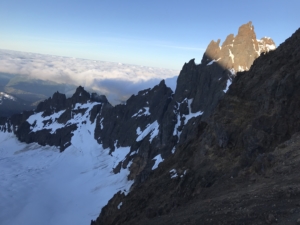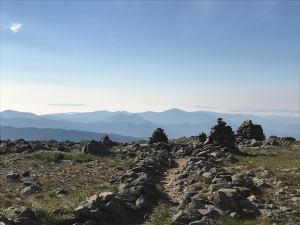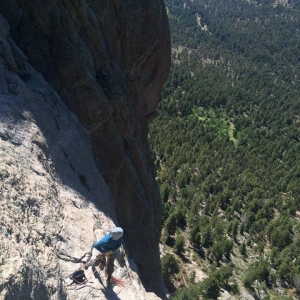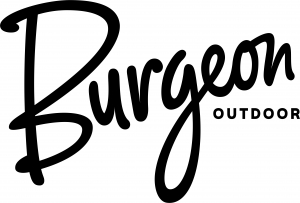Mountain Travel in the Time of COVID-19
Mountain Travel in the Time of COVID-19
Past:
Where to begin… a little over eight weeks ago on my last day of work on Mt. Williard at the top of Crawford Notch, NH. It was St. Patrick’s Day, and at this point I had been anxious about the Corona Virus for weeks. Not scared, but anxious about what the future would hold for me, my business, and most importantly my family. Talking with friends and family, it seemed that while it was on people’s minds, there was an optimistic atmosphere. Fast forward several weeks, and the NYTimes has almost daily reporting on how egregiously delayed the U.S. response was to this pandemic and how the local, state, and Federal Government mislead the public into a false sense of security. We should have known better.

Old Lava Cores, Mt. Baker, WA
In general, I think climbers are an optimistic bunch. I mean who would participate in a sport that has both sport climbing, intended to be really hard, or R-rated climbing, really difficult to protect against a fall, on the same cliff? A bit nebulous to grasp to say the least. For me, that’s where the beauty lies; in our own expression of creativity through movement. I love all the contradictions in climbing and the evolution of the sport as time and technology ceaselessly march on.
COVID has changed our world forever. Like many events over the course of recorded human history, this will have a lasting effect on our psyche and biology. Climbing too, will change. As will the profession of mountain guiding and climbing instruction.
Present:
One thing I’m certain of is that this nebulous, very difficult, and sometimes dangerous sport is more relevant than ever. Climbing has always had the capacity to promote well being of the body and mind, and intensely strong bonds between people who share a rope. Yet, there is something even more pertinent than that in the age of COVID; climbing (and especially guiding), has taught me many things, but most of all it has taught me how to assess risk and make decisions.
I often feel that a guide is a “decision maker for hire”. In other words, we don’t have magic powers and make our guests levitate up climbs. In fact, our guests are amazing athletes and climbers in their own right. Their skills in movement, self care, rope management, etc. are many times top notch. What I bring to the table is the decision making capability, especially when it comes to mountain travel.

Mountain Path, New Hampshire
So, currently I, like all of us, am faced with a whole host of decisions. Climb or not climb? If I do climb, what will it look like? If I add procedures to mitigate the risk, what are those procedures? What terrain do I choose and how do I choose to approach it? Do I open my business? Like any complex mountain objective, the current mental 4-dimensional labyrinth we find ourselves in is going to require a lot of decision making. Making decisions is what I have studied, trained and chosen for my life’s work.
Future:
As time moves forward we will all come to our own decisions as to how to live in the new normal. As science progresses, new effective treatments will hopefully be developed to address this scary, highly infectious respiratory disease. Climbing will also progress and shift.
Always, but especially in the time of COVID, this nebulous, seemingly pointless practice of fighting gravity, struggling up a cliff just to come back down exhausted, has much more to teach us about who we are as individuals and our place on the Earth. It is my sincere hope that Mooney Mountain Guides can be a model to climbers everywhere for moving forward and making some of these challenging decisions for ourselves.

Lumpy Ridge, CO
Some decisions I have made:
- Climbing is worth it. Although I will apply a sport climbing mindset and implement procedures that mitigate the risk, while still allowing me to climb at a high level.
- Guiding is possible. One overwhelming experience I have had during this time, is feedback from guests about just how much they trust my decision making. I never felt as though I took it for granted, but this pandemic certainly brought to light how valued the guest:guide relationship is.
- Guide services, like Mooney Mountain Guides, are uniquely positioned and have a responsibility to promote sustainable climbing practices that will not jeopardize our health or ability to access the climbing areas we love so much.
- I have publicly posted a “Code of Responsibility” to help promote sustainable climbing practices. https://www.mooneymountainguides.com/covid-19-response-updates/
- I choose to continue the practice of making decisions and applying the most up to date technical skills to mitigate risk in my craft of mountain guiding.
I so look forward to exploring the evolution of climbing and decision making while traveling through the mountains with my treasured guests.
Alex Teixeira
Mooney Mountain Guides, Owner & Lead Guide












